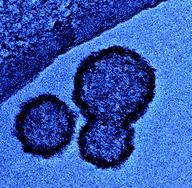Nanoparticles of calcium phosphate assemble spontaneously within a few seconds into hollow spheres with a diameter around 200–300 nm in the presence of dissolved amino acids and dipeptides. The process of formation was followed by cryo-transmission electron microscopy (cryoTEM), proving their hollow nature which was also confirmed by nano-indentation by atomic force microscopy (AFM). The hollow spheres were analyzed by scanning electron microscopy (SEM), dynamic light scattering (DLS), nanoparticle tracking analysis (NTA) and elemental analysis. The hollow spheres were moderately stable against heating and ultrasonication. A self-assembly of the primarily formed calcium phosphate nanoparticles around amino acid-rich domains in water is proposed. As this process was observed with different amino acids, it appears to be a more general phenomenon.

